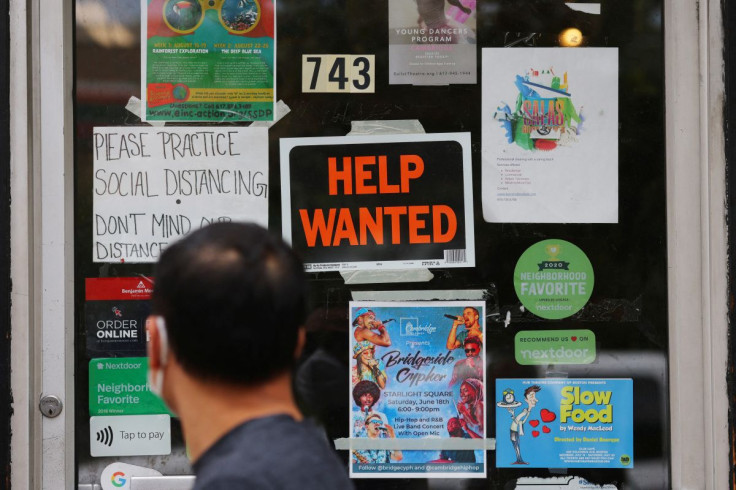U.S. Job Openings At Nine-month Low; Labor Market Still Tight

U.S. job openings fell by the most in just over two years in June as demand for workers eased in the retail and wholesale trade industries, but overall market conditions remain tight, allowing the Federal Reserve to continue raising interest rates.
Despite the larger-than-expected decrease in vacancies reported by the Labor Department in its Job Openings and Labor Turnover Survey, or JOLTS report, on Tuesday, the jobs market still favors workers. At least 4.2 million workers voluntarily quit their jobs in June and layoffs declined.
Job openings are among several metrics being closely watched by Fed officials. The U.S. central bank has been delivering hefty interest rate hikes in its war against inflation, pushing the economy to the brink of a recession.
"The labor market may be cooling off, but the temperature decline is far from a plunge," said Nick Bunker, director of economic research at Indeed Hiring Lab in Washington. "The outlook for economic growth may not be as rosy as it was a few months ago, but there's no sign of imminent danger in the labor market."
Job openings, a measure of labor demand, were down 605,000 to 10.7 million on the last day of June, the fewest since September 2021, the JOLTS report showed. June's decline was the largest since April 2020, when the economy was reeling from the first wave of the COVID-19 pandemic.
Job openings have been declining since scaling a record high of 11.9 million in March. Still, job openings are nowhere the low levels seen during the Great Recession 13 years ago.
Economists polled by Reuters had forecast 11.0 million vacancies. The Fed is trying to dampen demand for labor and the overall economy to bring inflation down to its 2% target.
The central bank last week raised its policy rate by another three-quarters of a percentage point. It has now hiked that rate by 225 basis points since March.
The government reported last week that the economy contracted 1.3% in the first half of the year. Wild swings in inventories and the trade deficit tied to snarled global supply chains have been largely to blame, though overall economic momentum has cooled.
NOT RECESSIONARY
"The JOLTS report on the whole is one of many labor market indicators that don't look 'recessionary' despite more downbeat signals coming out of some other economic indicators," said Daniel Silver, an economist at JPMorgan in New York.
Job openings decreased by 343,000 in the retail trade sector. The wholesale trade industry had 82,000 fewer vacancies, while state and local government education reported a reduction of 62,000 in openings.
Hiring slipped to 6.4 million from 6.5 million in May. In June, there were 1.8 jobs for every unemployed person.
GRAPHIC: U.S. job vacancies to unemployed ratio (

)
About 4.2 million people quit their jobs in June, down from 4.3 million in May. The quits rate was unchanged at 2.8%. It is viewed by policymakers and economists as a measure of job market confidence. The high quits rate suggests wage inflation will likely persist for a while.
The government reported last week that wages and salaries surged 1.4% in the second quarter after rising 1.2% in the January-March period. They accelerated 5.3% on a year-on-year basis, the largest rise since the current series began in 2001.
Layoffs slipped to 1.3 million from 1.4 million in May. The layoffs rate was unchanged at 0.9%.
© Copyright Thomson Reuters {{Year}}. All rights reserved.





















